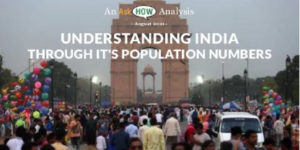Unlocking the economy : the road aheadfeatured

Delicate balance, considerations and decisions
(Manish Agarwal (Infrastructure specialist &AskHow volunteer) and Sanjay Srivastava (Integrated industrial ecosystem professional) ask, How would the lockdown be released, with a follow-up on the previous Article published on Apr 12, 2020. This is an indicative framework, intended to provide structure to a crucial dialogue. All views are personal).
The unlocking of economy is complicated by the need to contain the pandemic. The size and diversity of India only increases this complexity. The balance between the two will remain in a state of “dynamic equilibrium”, requiring constant corrections, to stay the course. We expect to hear debate on whether the Government is permitting “too little” or “too much”, over the next few weeks, until (hopefully!) we accept some state as Goldilocks’ “just right” one.
The Ministry of Home Affairs (MHA) has issued a guideline on April 15,2020 listing certain economic activities & opening conditions permitted after April 20, 2020. We had presented a framework of choices in the first article. We use the same to highlight the challenges that will be faced, and key considerations in resolving them.
- Where ? The MHA order allows select additional activities in areas not demarcated as containment zones by States/ UTs/ District Administrations. The order broadly envisages three areas. (1) the hotspots, where nothing will be permitted; (2) rural areas and industrial parks, where most activities are permitted; and (3) rest of India (largely, urban) where restricted economic activities are allowed. The States and UTs are tasked with identifying and managing permissible zones and containment zones. This broad-brush categorization is useful as a first step, considering that we have still not crossed the peak of new infections discovered. However, with well over 60% of GDP being generated in urban India, there will be a clamour for more granular categorization, and creation of sub-clusters that can be opened. Factors that consider medical readiness and economic impact, backed up with dynamic reassessment, will be key to the difficult decisions that will follow.
- What (and in what sequence)? The emphasis remains on expanded definition of “essential services”. It covers most of the primary sector (agriculture, fishing, poultry, etc.), parts of industry (pharma, medical equipment, continuous process and IT hardware), and some services (public utilities, financial sector, IT/ITES (with 50% attendance), plumbers/electricians, etc.
Construction is permitted in non-urban areas, (except where workers are already in place). Retail is opened up for supply of essential services, without direct traffic at the stores. Though e-commerce companies have been permitted to supply essential services, their ability to home-serve large parts of urban India in a cost effective manner, will be tested. Perhaps, the ability to provide larger parcels (e.g. if non-essentials are also permitted), may be needed. Each of these two sectors contribute to over 8% of the economy, and are not easily amenable to social-distancing. It is likely that these sectors become more prominent as the debate on implementation issues grows. The industrial sector has been largely permitted to start work, as most of them are in non-urban areas anyway. Whether the capacity utilisation restrictions (for social distancing) becomes a constraint will be known only as the demand becomes more visible, which is likely to take over a month, as inventories get pushed out first. A huge responsibility has been placed on Industrial Park operators in permitting them to operate. Their continued operations will depend on their ability to implement sanitisation processes and align with the Government for quick identification & isolation if the situation arises. - How? We had highlighted the need for “sanitised operations guidelines” in our first article as a critical success factor. Annexure I of MHA guidelines defines enforceable directives for public spaces, work spaces and manufacturing establishments. Further, Annexure II delineates Social Distancing norms to be followed for all establishments planning phased opening. While these initial guidelines are certainly a good start, we do expect these to continue to evolve as various businesses put them into practice. The challenge of minimising risk of transmitting infections, within reasonable cost, will lead to ethical dilemmas. Any approach which requires “elimination of risk of infection” is likely to be impractical. Rapid buildup of health infrastructure, and building confidence in it, is the necessary step to managing this trade off sensibly.
- Transport & Logistics. A big thumbs up to the guidelines for having covered the backward and forward linkages of each permitted activity with sufficient emphasis (e.g ambulance manufacturing, service providers to hospitals, etc are permitted). This will ensure that subsequent decisions / clarifications are not needed, as these activities get started. The same has also been done with Goods transport, which is permitted, and truck repair services, dhabas etc. are also permitted. All passenger transport (road, rail, air, taxi, private) continue to remain suspended (except where required for permitted activities). Opening of passenger transport will be a key challenge for the subsequent phase, particularly in low-impact areas, and will lead to debates on what boundaries can/ how to be permitted to be crossed. Without this, most of urban India will see little change in their lives after May 3.
- Governance. The governance system empowers District Magistrates who in turn can deploy Executive Magistrates as Incidence Commanders to enforce the rules and restrictions; and punishment & penalties are spelt out. State Governments are permitted to have more stringent rules than in the guidelines. The coordination mechanism between Center, State and local administration has hopefully been set up by now. It is inevitable that clarifications and calls for leniency will arise as the implementation gets going. A robust mechanism would be required for quick two-way exchange/ feeding of these into the Center’s & states’ control room, and equally quick dissemination of the answer to all State and local area implementers. As case by case issues arise, the robustness of the governance mechanism will get tested.
- Communication and Course Correction. The MHA guideline is a good example of communication in time (atleast 5 days ahead) and with reasonable clarity. The same approach would be helpful as further categorisation and unlocking gets decided. The possibility of rollbacks (say, from Green to Yellow etc.) should be part of such communication. People will also want to know the criteria for an area to stop being a hotspot, and thereby becoming eligible for permitted activities. Another challenge would be to communicate to workers that it is reasonably safe to come back to work, by building confidence in the SOPs and medical infrastructure. This would also require a differentiated approach where parts of the workforce will have to be paid to come to work, while others are paid to stay at home.
India is observing a 40 day “quarantine” period, fully justifying the term. However, there is a long way ahead, described by Tomas Pueyo as the “Hammer & Dance” strategy. The extent of impact of the hammer will be better known as we get closer to the May 3 deadline, and the question of “what next & how” becomes prominent.
In conclusion, the first steps towards unlocking will certainly have implementation challenges and difficult tradeoffs. The manner of handling these will provide the confidence for people to continue to align with the post May 3 rules. As everyone looks forward to a possible stimulus package in offing, further steps on the unlocking, its management & governance, and communication, remain critical to achieving the balance between managing the spread and growing the economy.
#StaySafe #StayHome #IndiaFightsCorona
https://www.linkedin.com/in/sanjays
https://www.linkedin.com/in/manish-agarwal-0985774



